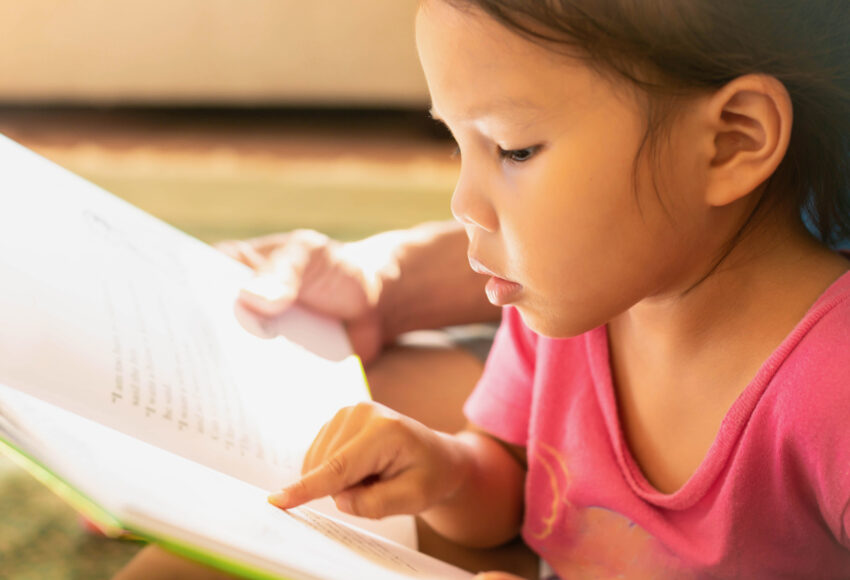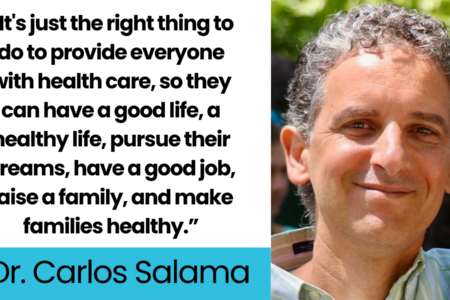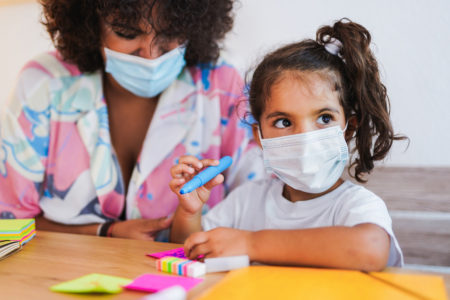
Share On Social!
COVID-19 certainly hurt the health of many, including Latinos.
But the pandemic is also threatening the education of children, amid three years of school shutdowns, isolation, and continuing waves of cases.
Many students are falling behind in reading, especially.
In 2022, the average reading score at both 4th and 8th grade decreased by 3 points compared to 2019, according to the National Center for Education Statistics.
The National Assessment for Education Progress (NEAP), further highlights that while average 4th grade reading scores in 2022 were higher for Asian/Pacific Islander, Black, Latino, and White students, Latino and Black students still had lower reading average scores than White students.
Let’s examine the literacy issues children face, the factors that contribute to them, and how it impacts Latino students.
Literacy Challenges Before COVID-19
Unfortunately, a literacy crisis was happening well before COVID-19.
“In 2019, results on national and international exams showed stagnant or declining American performance in reading, and widening gaps between high and low performers,” according to EdSource.
Educators also continue to lack the resources necessary to further help their students.
“Structural inequities like underfunding education by ZIP code and institutional racism also demand action, but well-trained teachers themselves have a huge role to play in a just future,” according to Education Week.
COVID-19 worsened this situation.
The pandemic shut down schools and forced students to make their homes their classroom, though many were without laptops or Internet access, causing many to struggle.
“About a third of children in the youngest grades are missing reading benchmarks,” according to The New York Times.
Latino Students and Literacy
While 4th-grade Latinos had lower reading scores, Latino students in 8th grade saw improvement in their reading.
Despite these results being positive, learning issues and outside factors amid COVID-19 is affecting students of color disproportionately.
“All children have been affected, but Black and Latino children, as well as those from low-income families, those with disabilities and those who are not fluent in English, seem to have fallen the furthest behind,” according to EdSource.

Another disparity impacting Latino students included lack of access to the internet.
33% of Latino families do not have regular access to the internet, according to a 2020 survey administered by Latino Decisions and Abriendo Puertas/Opening Doors.
The same survey reports that 50% of Latino parents do not have enough computers, laptops, or tablets for everyone in the household.
The lack of access to these important tools and resources can contribute to Latino students falling behind in schoolwork.
Other factors such as parent illiteracy, low-income settings, lack of attention from parents regarding reading, and language barriers can also cause challenges for Latino students.
In San Antonio, Texas, where 64% of Latinos make up the city’s total population, fewer than half of the students enrolled in public schools are reading on grade level.
A 2021 study from Stanford University examined over 100 school districts across 22 states found that students’ reading fluency in second and third grade is about 30% behind what would be expected in a typical year.
“Students in lower-achieving districts are falling behind faster relative to others, according to the study. “This demands attention from policymakers and educators, as greater learning loss for students in lower achieving school districts may exacerbate disparities.”
Ways to Help Students
A previous Salud America! resource highlights ways to help students that may be struggling with school:
- Focusing on student’s strengths, not weaknesses.
- Taking advantage of community resources.
- Focusing on emotional learning and wellness.
- Providing extended learning time to students who need it.
- Keep a close parent-teacher relationship.
Organizations like the National Education Organization also provides helpful tools and resources for students and parents, such as reading tips for bilingual families and strategies to support learners who are below grade level.
“Improving literacy rates in the United States is important for individual and societal well-being. It can lead to increased opportunities and better outcomes in education, employment, and overall quality of life,” according to Prosperity For All.
Health Equity in Your Community
How is educational equity in your community?
Find out with the help of the Salud America! Health Equity Report Card.
Enter your county name and explore a variety of local maps and data about equity issues in your community, such as education, socioeconomic status, health care, and social vulnerability.
Use the data from the Report Card and compare it to other counties and states across the nation.
Share what you find with friends, family and city and school leaders to advocate for change in your area!
By The Numbers
142
Percent
Expected rise in Latino cancer cases in coming years




[…] The pandemic is another chapter in the bitter story of American racism and inequality. Black and Latinx people are being infected and are dying at much higher rates than white Americans. Many people of […]
[…] coronavirus has killed over 61,000 Latinos in America according to the CDC, accounting for over 18.2% of the total COVID deaths in the […]
[…] Whereas Hispanics make up 11% of D.C.’s inhabitants, they signify 19% of the COVID cases, and 14% of the deaths. Equally, 46% of D.C.’s residents are Black, they usually make up an alarming 75% […]
[…] and historical mistreatment. According to the U.S. Centers for Disease Control and Prevention, Latino and Black American communities are three times more likely to become infected with […]
[…] Covid pandemic has hit the Latino community particularly hard, and data from the nonprofit health equity advocacy group Salud America! shows Latinos lead in the 0-24 age […]
[…] the pandemic, Latinos took major blows, both in terms of COVID-19 cases and also from the economic recession under former President Donald Trump. Nearly half (49%) of […]
[…] the positive trend, the harm may have already been done. The pandemic has disproportionately impacted Latino communities. Reuters reported that election-related or political disinformation that […]
[…] pesar de la tendencia positiva, es posible que el daño ya esté hecho. La pandemia ha impactado desproporcionadamente Comunidades latinas. Reuters informó que la desinformación política o relacionada con las […]
[…] residentes blancos muestran una tasa mucho más baja con 10 muertes por cada 100,000 habitantes(8 9) . Los afroestadounidenses por su parte, denuncian subsistemas de salud que les segregan […]
[…] https://salud-america.org/coronavirus-case-rates-and-death-rates-for-latinos-in-the-united-states/ […]
[…] https://salud-america.org/coronavirus-case-rates-and-death-rates-for-latinos-in-the-united-states/ […]
[…] communities have the second-highest number of COVID-19 cases in the U.S. They’re also more likely to become hospitalized and die from the disease than other […]
[…] total, around 160,000 Latinos were killed by COVID-19. This accounts for 16% of the 1 million deaths in the country. The […]